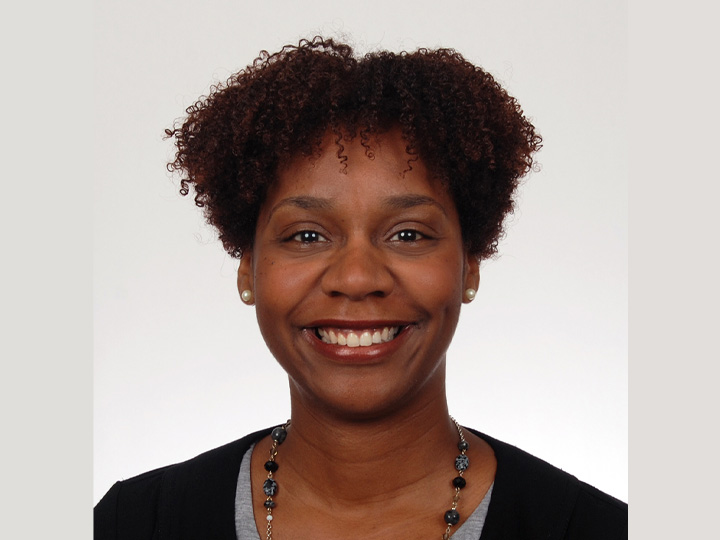
The National Institute on Deafness and Other Communication Disorders (NIDCD) has awarded $193,750 to the communication sciences and disorders department to assess the language skills of Black children speaking a dialect different than what is primarily spoken in the classroom.
“The population of interest for me is Black children who tend to be overrepresented in special education and underrepresented in gifted and talented programs,” said Associate Professor Monique T. Mills, the project’s principal investigator. “The overarching goal of my research program is to figure out what their language profile is currently and how we can improve language processing skills.”
The project, “Dialect Detection in School-age Black Children: An Eye-tracking Study,” will be funded over a two-year period by an R21 grant from NIDCD. Funding will support a validation study surrounding the cultural aspects of students learning African American English (AAE) as their first dialect but taught academically in Mainstream American English (MAE) at school.
“The two dialects of English are alike and unalike, and this can create dialect mismatch effects that hamper academic achievement in Black children,” said Mills. “Mismatches between a child’s dialect and the dialect of instruction can impair language processing, creating slowed comprehension. We have used measures of language to examine dialect mismatch effects that do not fully capture moment-by-moment processing, so we are excited about what we’ll learn from using eye-tracking technologies.”
Researchers will drive the Speech, Language, and Hearing Mobile Unit to schools, churches and participating organizations across Houston to collect data from children whose parents can’t get to campus. The state-of-the-art mobile unit, harboring two private rooms and a small waiting area, will improve the research team’s capacity to see multiple children at a time.
While looking at pictures, seven-year-old children will listen to different dialects, providing eye-tracking profiles that the research team will compare against a variety of norm referenced tests and language samples. Mills and her team will utilize results to address a common misclassification of children in schools to help speech-language pathologists clarify which students are struggling to process the dialect of the classroom.
Julia Benoit, Texas Institute for Measurement, Evaluation, and Statistics and optometry faculty member at the University of Houston, will partner with Mills on this project, working as statistician on the grant to analyze the data collected. Amber Thiessen, communication sciences and disorders associate professor, will serve as co-investigator, co-training students in the use of eye-tracking technologies.
“Undergraduate students will be involved in every aspect of data collection, coding, storage, analysis and data management on this project,” Mills said. “I'm really excited about that as well; the hands-on opportunity is a huge advantage for them and something CLASS is consistently working to offer.”
Also working as director of the Child Language Ability Lab, Mills noted that cocurricular activities and opportunities for students to have experiential learning and 1-on-3 engagement are important and increasingly seen throughout CLASS. Instead of 1-on-43, students involved will be provided a more intimate learning environment and access to an instructor within a smaller group.
Researchers will identify dialect detection profiles of Black children to better understand linguistic differences and dialectal patterns. Results will be used to identify a superior method for characterizing Black children’s language processing abilities than is currently available to speech-language pathologists. Future research could then better identify the effective “ingredients” of language assessment protocols designed for Black speakers of child AAE.
“Ultimately, our goal is identify language processing profiles in special populations of Black children at opposite ends of the ability spectrum: gifted and talented versus development language disordered,” said Mills.
The Children's Museum of Houston is working to bring children’s spoken and written language to grade level and will join churches and elementary schools in and around the Third Ward in support for the study.
“It would be impossible for me to do anything that I proposed in the grant without access to the population,” Mills noted. “I'm grateful to the community partners, youth ministry leaders, principals and colleagues who have all taken an interest in what we’ve set out to do.”